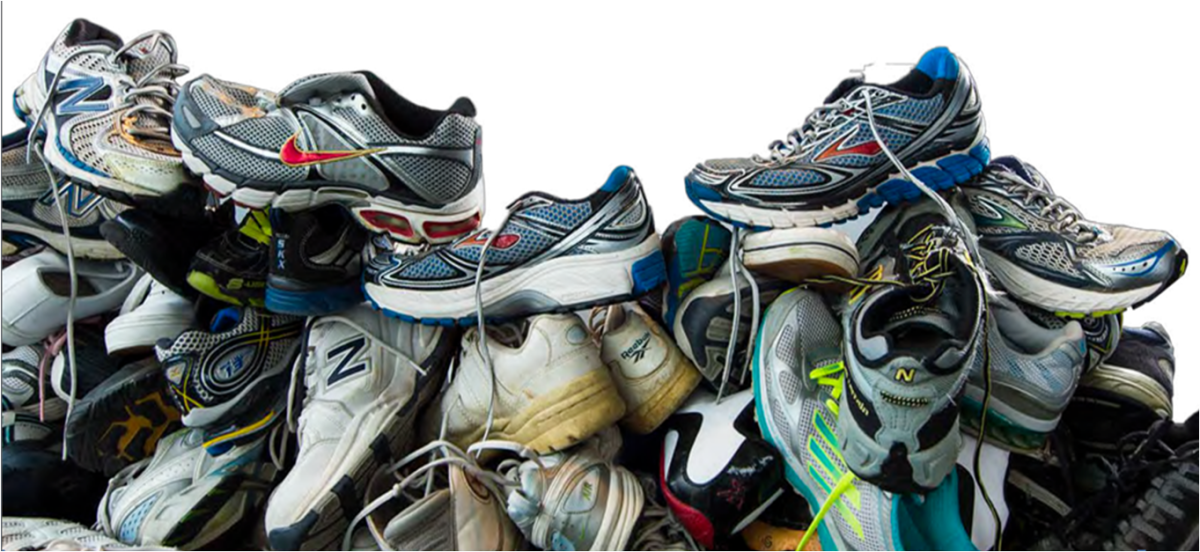Boeing Employee Efforts Improve Environmental Performance
Boeing employee efforts help reduce waste sent to landfills
Learn more about how Boeing employees are improving environmental performance
This story originally featured in the February issue of the Boeing magazine, Frontiers.
Difference Makers
Cheryl Fievet remembers the early days of recycling at the St. Louis site and sometimes has a hard time believing how far the recycling program has come in the past 10 years.
“We started in 2003 with a handful of employees pushing to recycle the plastic soda-pop bottles from vending machines. We thought it was a big step forward just being allowed to move recycling containers indoors from outside in the parking lots,” said Fievet, an industrial engineer with Boeing Defense, Space & Security.
Through persistence, partnerships with the site’s facilities group and support from leadership, the “handful” of employees a decade later is now the Boeing Employees for Environmental Protection, or BEEP, with 250 members. It’s one of the largest teams of environmentally active employees at Boeing.
The St. Louis team is credited with helping establish innovative recycling projects that have helped Boeing reduce its environmental footprint and expand opportunities for employees to recycle and get involved with a variety of environmental activities.
Bryan Kury, St. Louis Site Services manager, said employee engagement played an important role in helping the site support the company’s first five-year environmental targets, set in 2007. And employee involvement is seen as an important factor in helping Boeing continue to improve its environmental performance.
“It’s all about harnessing the power of the engaged and informed employee,” Kury said.
The success of the employees’ efforts can be measured in part by the amount of solid waste the site now recycles; up from 12 percent in 2007 to 67 percent in 2012. The volume of waste sent to landfills has been reduced by two-thirds. Across the company, almost 80 percent of the solid waste Boeing generated from 2007 to 2012 was diverted from landfills.
The initial push in St. Louis to recycle beverage containers expanded to include other materials, including cardboard, paper, wood, empty paint and sealant containers, Styrofoam, and several types of plastic. About 4,000 pounds (1,800 kilograms) of bubble wrap is recycled each month alone.
The strong interest in recycling enables the St. Louis team to organize on-site events where employees can bring from home used electronics and other household items that are donated to community groups for reuse or recycling. Athletic shoes are donated to Nike for recycling into a surface material used on playgrounds and athletic fields; blankets and towels are given to a local animal shelter.
In addition to a monthly newsletter, the team has an internal website and a network of “champions” in nearly every building who monitor recycling containers and serve as employee contacts. But good communications is only one part of the picture, said Alyssa Duarte-Reinagel, a systems manager with Defense, Space & Security who helped launch the site’s broader recycling efforts in 2003.
“You need to come with ideas, suggestions and solutions for what needs to be done; you can’t just complain about something,” Duarte-Reinagel said.
She and other team members say BEEP is an example of how one employee, with persistence and commitment, can make a difference.
“When I hear people say, ‘We can’t change things,’ ” Duarte-Reinagel said, “I point to the blue recycling containers all around the site and say, ‘Actually, you can.’ ”
Building a better planet
The passion and commitment of employees around the company will continue to play a critical role as Boeing implements plans and strategies to meet aggressive new environmental goals, according to leaders of the company's environmental activities.
Boeing is committed to zero growth in the environmental footprint of its operations during a time when the company’s core business is expected to experience continued strong growth and expansion, said Terry Mutter, Boeing’s environmental strategy leader.
“Zero footprint growth doesn’t mean we stay where we are; far from it,” Mutter said. Indeed, to achieve zero growth in greenhouse gas emissions and other key environmental measures, such as water use and the amount of non-hazardous waste sent to landfills, “We will need double-digit improvements in efficiency across all of our operations,” he said.
Last year, Boeing successfully met its first five-year environmental targets, which included reductions of 9 percent in carbon dioxide emissions, 2 percent in water use, 3 percent in energy use, 36 percent in waste sent to landfills and 18 percent in hazardous waste generation. Employee-led projects were critical to the success, Mutter added.
“We all have an opportunity to make a measurable difference,” Mutter said. “Every day, Boeing employees build a better planet by identifying ways to reduce waste, improve processes and drive environmental considerations into their daily work.”



